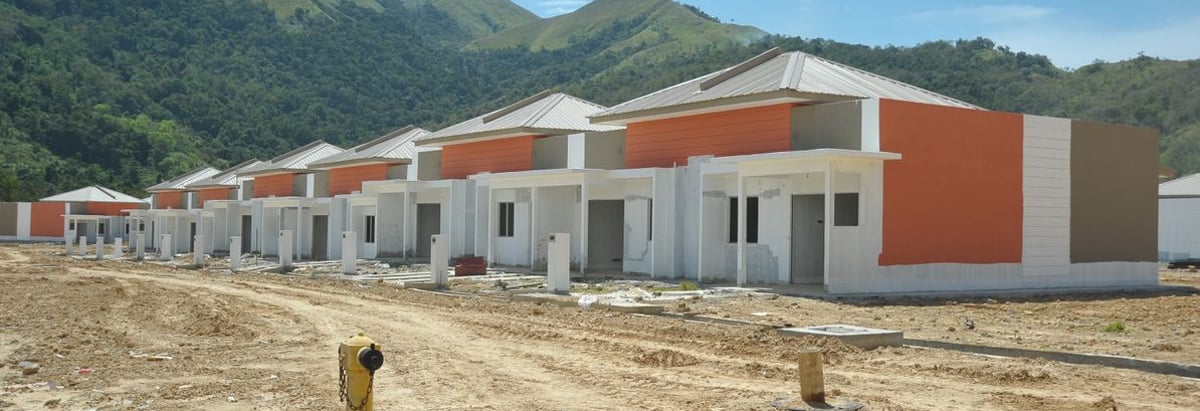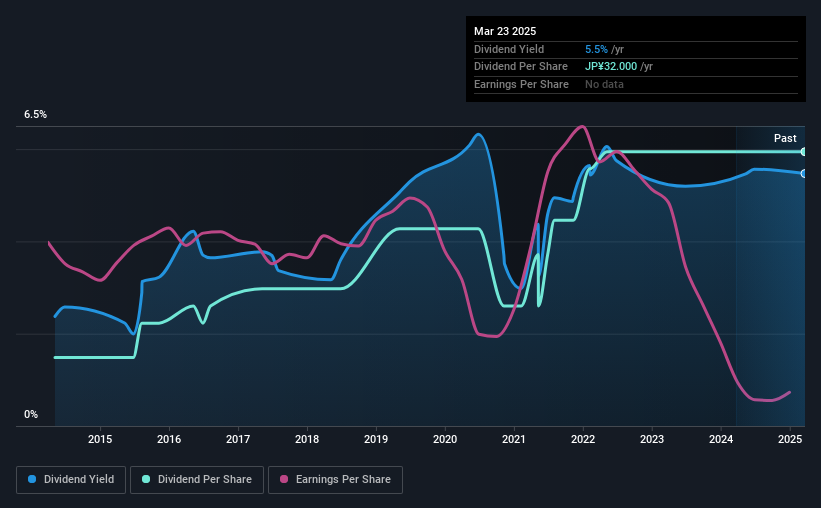- Japan
- /
- Real Estate
- /
- TSE:8999
Dividend Investors: Don't Be Too Quick To Buy Grandy House Corporation (TSE:8999) For Its Upcoming Dividend

Readers hoping to buy Grandy House Corporation (TSE:8999) for its dividend will need to make their move shortly, as the stock is about to trade ex-dividend. The ex-dividend date is commonly two business days before the record date, which is the cut-off date for shareholders to be present on the company's books to be eligible for a dividend payment. The ex-dividend date is an important date to be aware of as any purchase of the stock made on or after this date might mean a late settlement that doesn't show on the record date. In other words, investors can purchase Grandy House's shares before the 28th of March in order to be eligible for the dividend, which will be paid on the 30th of June.
The company's next dividend payment will be JP¥32.00 per share. Last year, in total, the company distributed JP¥32.00 to shareholders. Calculating the last year's worth of payments shows that Grandy House has a trailing yield of 5.5% on the current share price of JP¥585.00. If you buy this business for its dividend, you should have an idea of whether Grandy House's dividend is reliable and sustainable. That's why we should always check whether the dividend payments appear sustainable, and if the company is growing.
Dividends are usually paid out of company profits, so if a company pays out more than it earned then its dividend is usually at greater risk of being cut. Last year, Grandy House paid out 285% of its profit to shareholders in the form of dividends. This is not sustainable behaviour and requires a closer look on behalf of the purchaser. A useful secondary check can be to evaluate whether Grandy House generated enough free cash flow to afford its dividend. What's good is that dividends were well covered by free cash flow, with the company paying out 21% of its cash flow last year.
It's disappointing to see that the dividend was not covered by profits, but cash is more important from a dividend sustainability perspective, and Grandy House fortunately did generate enough cash to fund its dividend. If executives were to continue paying more in dividends than the company reported in profits, we'd view this as a warning sign. Very few companies are able to sustainably pay dividends larger than their reported earnings.
Check out our latest analysis for Grandy House
Click here to see how much of its profit Grandy House paid out over the last 12 months.

Have Earnings And Dividends Been Growing?
Companies with falling earnings are riskier for dividend shareholders. If earnings fall far enough, the company could be forced to cut its dividend. Grandy House's earnings per share have plummeted approximately 31% a year over the previous five years.
Many investors will assess a company's dividend performance by evaluating how much the dividend payments have changed over time. In the last 10 years, Grandy House has lifted its dividend by approximately 15% a year on average. That's intriguing, but the combination of growing dividends despite declining earnings can typically only be achieved by paying out a larger percentage of profits. Grandy House is already paying out a high percentage of its income, so without earnings growth, we're doubtful of whether this dividend will grow much in the future.
The Bottom Line
Has Grandy House got what it takes to maintain its dividend payments? It's never great to see earnings per share declining, especially when a company is paying out 285% of its profit as dividends, which we feel is uncomfortably high. However, the cash payout ratio was much lower - good news from a dividend perspective - which makes us wonder why there is such a mis-match between income and cashflow. It's not an attractive combination from a dividend perspective, and we're inclined to pass on this one for the time being.
With that being said, if you're still considering Grandy House as an investment, you'll find it beneficial to know what risks this stock is facing. For example, Grandy House has 4 warning signs (and 2 which can't be ignored) we think you should know about.
Generally, we wouldn't recommend just buying the first dividend stock you see. Here's a curated list of interesting stocks that are strong dividend payers.
New: Manage All Your Stock Portfolios in One Place
We've created the ultimate portfolio companion for stock investors, and it's free.
• Connect an unlimited number of Portfolios and see your total in one currency
• Be alerted to new Warning Signs or Risks via email or mobile
• Track the Fair Value of your stocks
Have feedback on this article? Concerned about the content? Get in touch with us directly. Alternatively, email editorial-team (at) simplywallst.com.
This article by Simply Wall St is general in nature. We provide commentary based on historical data and analyst forecasts only using an unbiased methodology and our articles are not intended to be financial advice. It does not constitute a recommendation to buy or sell any stock, and does not take account of your objectives, or your financial situation. We aim to bring you long-term focused analysis driven by fundamental data. Note that our analysis may not factor in the latest price-sensitive company announcements or qualitative material. Simply Wall St has no position in any stocks mentioned.
About TSE:8999
Grandy House
Grandy House Corporation constructs and sells houses and custom houses in Japan.
Average dividend payer slight.


